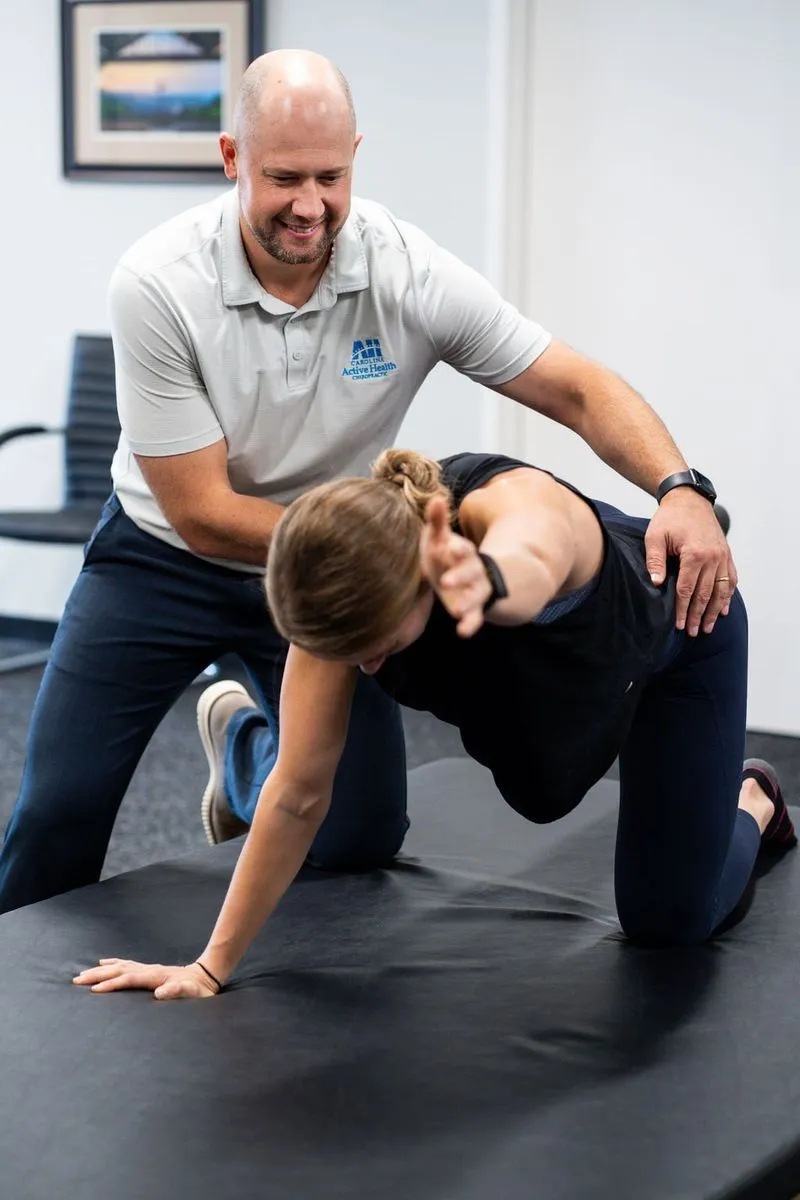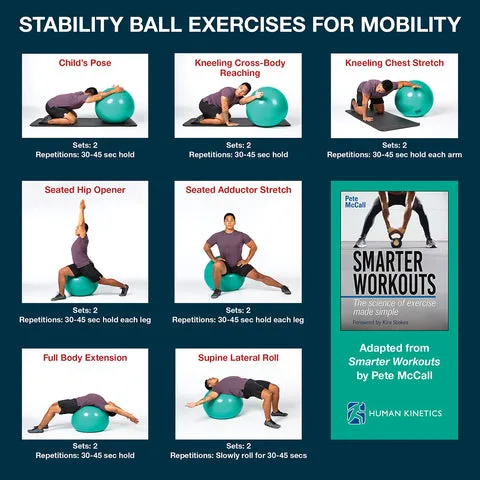
Welcome to the world of functional rehabilitation in chiropractic care! In this comprehensive guide, we will demystify the principles, benefits, and key components of functional rehabilitation, and explore how it can be seamlessly integrated into chiropractic treatment plans. Understanding the basics of functional rehabilitation is crucial to appreciating its importance in promoting long-term recovery and preventing re-injury for chiropractic patients. By incorporating tailored exercises to improve mobility, stability, and overall well-being, functional rehabilitation empowers patients to take an active role in their recovery journey. We will also address common misconceptions about functional rehabilitation and highlight the collaborative approach between chiropractors and rehabilitation specialists to provide holistic care. Furthermore, we will delve into advanced techniques and innovative approaches in functional rehabilitation, as well as the measurement of success and progress in rehabilitation programs. Ultimately, our goal is to empower patients through education, self-efficacy, and support, enabling them to achieve their functional goals and regain independence. Get ready to embark on a journey of discovery and empowerment in functional rehabilitation for chiropractic care!

Credits: carolinaactivehealth.com
Functional rehabilitation is a crucial component of chiropractic care, focusing on restoring and improving patients' ability to perform everyday activities. This form of therapy aims to address musculoskeletal injuries, chronic pain, and other physical ailments that hinder normal functionality. By targeting specific movement patterns and functional activities, chiropractors can help patients regain strength, flexibility, and overall mobility.
The principles of functional rehabilitation in chiropractic care revolve around personalised treatment plans tailored to each patient's unique needs. By utilising exercises, stretches, and manual therapies, this type of rehabilitation aims to target not only symptoms but also underlying causes. Through systematic evaluation and progression, functional rehabilitation helps individuals achieve long-term improvement in their physical function and quality of life.
Among the various benefits offered by functional rehabilitation for chiropractic patients are improved posture alignment, reduced risk of future injury recurrence or exacerbation, enhanced athletic performance for athletes or active individuals. It also plays a vital role in promoting independence and confidence in daily activities while minimising reliance on medication or invasive procedures.
Functional rehabilitation plays a crucial role in chiropractic treatment plans, as it focuses on restoring the patient's ability to perform daily activities and movements. Through assessment and evaluation, chiropractors can identify areas of functional limitation and develop tailored rehabilitation programs to address these issues. By incorporating functional rehabilitation into the overall treatment plan, patients can experience improved mobility, strength, and flexibility.
One of the key aspects of incorporating functional rehabilitation is the individualised approach taken to address each patient's specific needs. Chiropractors work closely with patients to understand their goals and limitations, allowing them to design targeted exercises and therapies that promote functionality. Whether it's correcting posture imbalances or enhancing range of motion, functional rehab aims to optimise the body's ability to move effectively and without pain.
Integrating functional rehabilitation exercises with chiropractic adjustments enhances the overall effectiveness of the treatment plan. While adjustments focus on spinal alignment and nerve function, rehab exercises target muscular imbalances and movement patterns. This integrated approach not only addresses immediate pain relief but also promotes long-term functionality for patients seeking comprehensive care.

Credits: us.humankinetics.com
In a comprehensive functional rehabilitation program, exercises aimed at improving mobility and stability are crucial. These exercises are designed to address the specific needs of the patient, targeting areas of weakness or dysfunction. By focusing on enhancing both mobility and stability, patients can experience improvements in overall functionality and reduced risk of future injuries.
Progressive rehabilitation techniques play a vital role in promoting gradual improvement in strength, flexibility, and function. These techniques often involve a step-by-step approach that allows patients to progressively challenge their abilities while ensuring proper form and technique. This helps in building resilience and endurance while minimising the risk of setbacks.
Furthermore, patient education and self-management strategies are integral components of any effective functional rehabilitation program. Educating patients about their conditions, teaching them how to perform exercises correctly, as well as providing tools for managing symptoms empowers individuals to take an active role in their recovery process. This holistic approach not only fosters better outcomes but also promotes long-term wellness.
One common misconception about functional rehabilitation in chiropractic care is that it is only for people with severe injuries or disabilities. In reality, functional rehabilitation focuses on improving overall functionality and mobility for individuals of all fitness levels. It can be beneficial for anyone looking to enhance their physical performance, prevent injuries, or manage chronic pain.
Another misunderstanding is that functional rehabilitation is a one-size-fits-all approach. In fact, each patient's treatment plan is tailored to their specific needs and goals. Whether it's targeting specific muscle groups, addressing posture imbalances, or enhancing athletic performance, functional rehab aims to optimise an individual's movement patterns and overall function.
Lastly, some may question the effectiveness of functional rehabilitation compared to other forms of therapy. However, numerous studies have demonstrated the positive impact of this approach in improving strength, flexibility, balance, and coordination. By debunking these misconceptions, we can better understand the valuable role that functional rehabilitation plays in promoting optimal physical wellness.
Functional rehabilitation in chiropractic care is a comprehensive approach aimed at promoting long-term recovery and preventing re-injury. Through tailored exercise programs and hands-on therapies, patients can regain functionality and strength in the affected areas, reducing the likelihood of recurring issues. By addressing underlying imbalances and weaknesses, functional rehabilitation empowers individuals to take an active role in their recovery, contributing to better outcomes and overall well-being.
The focus on functional rehabilitation extends beyond solely treating symptoms to enhancing overall functionality. This proactive approach not only targets specific areas of pain or discomfort but expands to improving movement patterns, muscle coordination, and mobility. As a result, patients experience improved quality of life with increased independence in daily activities while minimising reliance on passive treatments.
Ultimately, functional rehabilitation plays a pivotal role in optimising the benefits of chiropractic care by emphasising patient education and engagement. By incorporating exercises that mimic real-life movements and activities into treatment plans, individuals become better equipped to maintain their progress outside of clinical settings seamlessly integrating recovery efforts into their lifestyle.
In today's healthcare landscape, a multidisciplinary approach to patient care has become increasingly important. When it comes to functional rehabilitation, collaborating with chiropractors can significantly enhance the overall treatment plan. Chiropractors are skilled in addressing musculoskeletal issues and promoting proper alignment, which aligns well with the goals of functional recovery therapy.
By coordinating treatment plans between chiropractors and other healthcare professionals, patients can experience more comprehensive and holistic care. This team-based approach ensures that each aspect of the patient's condition is being addressed effectively and efficiently. Whether it's addressing pain management techniques or developing exercise regimens for functionality rehabilitation, a collaborative effort leads to optimal results.
When chiropractic care is integrated into functional rehabilitation programs, patients benefit from a well-rounded approach to their recovery. Functionality rehabilitation encompasses various aspects of movement and strength training, where chiropractors play a vital role in optimising musculoskeletal function. By fostering collaboration between chiropractors and other healthcare providers, patients receive the best possible care for their functional rehab needs.
In the field of chiropractic care, functional rehabilitation plays a crucial role in helping patients regain mobility, strength, and functionality. With advanced techniques, chiropractors are able to tailor rehabilitation programs to address specific needs and goals of each patient. This may involve utilising specialised equipment, integrating cutting-edge technology, and incorporating innovative exercises to improve overall function.
One key aspect of exploring advanced techniques in functional rehabilitation is the integration of technology and specialised equipment. This can range from state-of-the-art exercise machines designed to target specific muscle groups to virtual reality systems that aid in improving coordination and balance. By leveraging these tools, chiropractors can create personalised rehabilitation plans that optimise patient outcomes and expedite their recovery process.
Furthermore, as the field continues to evolve, there is a growing emphasis on adapting rehabilitation programs for complex cases and specialised needs. Whether it's addressing sports injuries or chronic conditions like arthritis or fibromyalgia, chiropractors are constantly refining their approach to functional rehab. The goal is not only to restore function but also enhance quality of life for individuals seeking holistic care.
In functional rehabilitation, success and progress are measured through the achievement of specific outcomes and milestones. These may include improvements in mobility, strength, range of motion, and overall functionality. By setting clear objectives at the beginning of the rehabilitation program, chiropractors can track the patient's journey towards recovery.
Tracking patient progress is essential in functional rehabilitation as it allows for adjustments to be made to the treatment plan based on real-time feedback. Regular assessments help evaluate improvement or identify areas that need additional focus. This approach ensures that patients are receiving individualised care tailored to their specific needs and circumstances.
Furthermore, evaluating the impact of functional rehabilitation on overall health and wellness plays a vital role in determining success. Improved functionality often translates to better quality of life, reduced pain levels, increased independence, and enhanced overall well-being. Chiropractors use various assessment tools to quantify these improvements objectively.
In chiropractic care, functional rehabilitation plays a crucial role in empowering patients to actively participate in their recovery process. By educating patients on the importance of active involvement, they gain a deeper understanding of how their efforts contribute to regaining functionality. This knowledge promotes self-efficacy and confidence, ultimately leading to better adherence to rehabilitation programs.
Functional rehabilitation also supports patients in achieving their functional goals and regaining independence. Through targeted exercises and therapy, individuals are guided towards improving their strength, flexibility, and overall functionality. By customising rehabilitation plans to address specific needs, chiropractors empower patients to take charge of their recovery journey.
By demystifying the concept of functional rehabilitation and emphasising its benefits within chiropractic care, patients are encouraged to embrace these techniques as integral parts of their treatment. As a result, they become more engaged in their own healing process while working towards enhancing their physical abilities and overall quality of life.
At Prime Chiro, we understand the importance of finding the best chiropractor near you in Lansvale NSW and nearby areas of Fairfield, Liverpool, and Cabramatta. Our team of experienced and professional chiropractors are dedicated to providing top-notch chiropractic care and consultation to individuals in need. Whether you are seeking relief from chronic pain, recovering from an injury, or simply looking to improve your overall wellness, Prime Chiro is here to help. Contact us today to schedule a consultation and take the first step towards a healthier and pain-free life.
Functional rehabilitation in chiropractic care refers to a specialised approach that focuses on restoring and improving the body's functional abilities through targeted exercises and therapies. It aims to address the underlying causes of pain and dysfunction, rather than just treating the symptoms.
While traditional chiropractic care primarily focuses on spinal adjustments to alleviate pain and improve joint function, functional rehabilitation takes a more comprehensive approach. It incorporates exercises, stretches, and other therapeutic techniques to improve overall body function and address the root causes of pain and dysfunction.
Functional rehabilitation can be beneficial for a wide range of conditions, including musculoskeletal injuries, chronic pain, postural imbalances, sports injuries, and neurological disorders. It can also be used as a preventive measure to enhance athletic performance and reduce the risk of future injuries.
A chiropractor will assess your condition through a thorough examination, which may include physical tests, medical history review, and diagnostic imaging. Based on the findings, they will determine if functional rehabilitation is appropriate for your specific needs and develop a personalised treatment plan.
During functional rehabilitation sessions, you can expect to engage in a variety of exercises, stretches, and therapeutic activities tailored to your specific needs. Your chiropractor will guide you through the process, monitoring your progress and making adjustments to the treatment plan as necessary.
TL;DR Functional rehabilitation is an important aspect of chiropractic care, focusing on mobility, stability, and overall well-being. It involves tailored treatment plans, patient education, and collaboration between chiropractors and other healthcare professionals. Advanced techniques and technology are used to track patient progress and ensure optimal outcomes. This approach empowers patients to take an active role in their recovery and promotes long-term wellness.